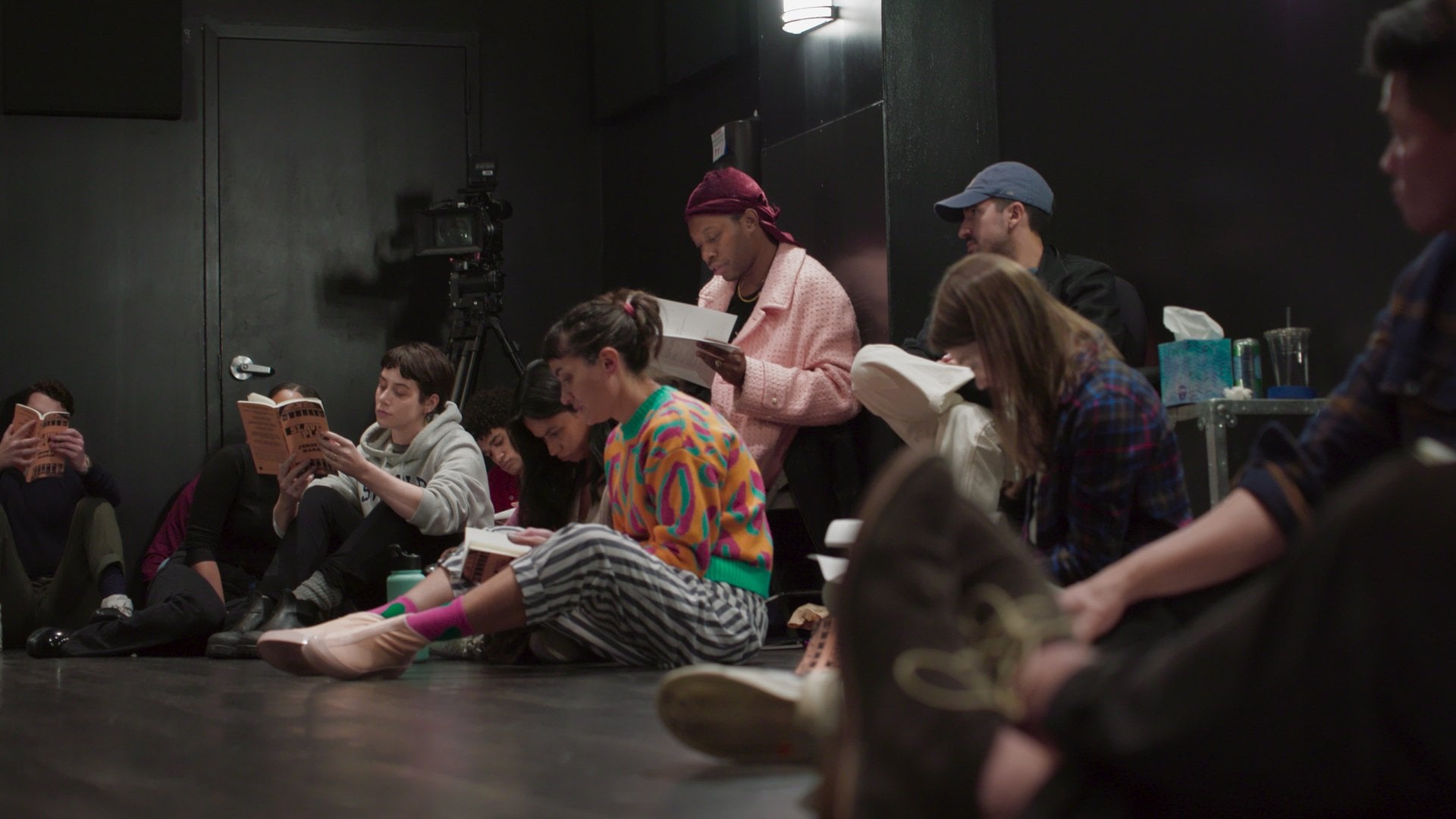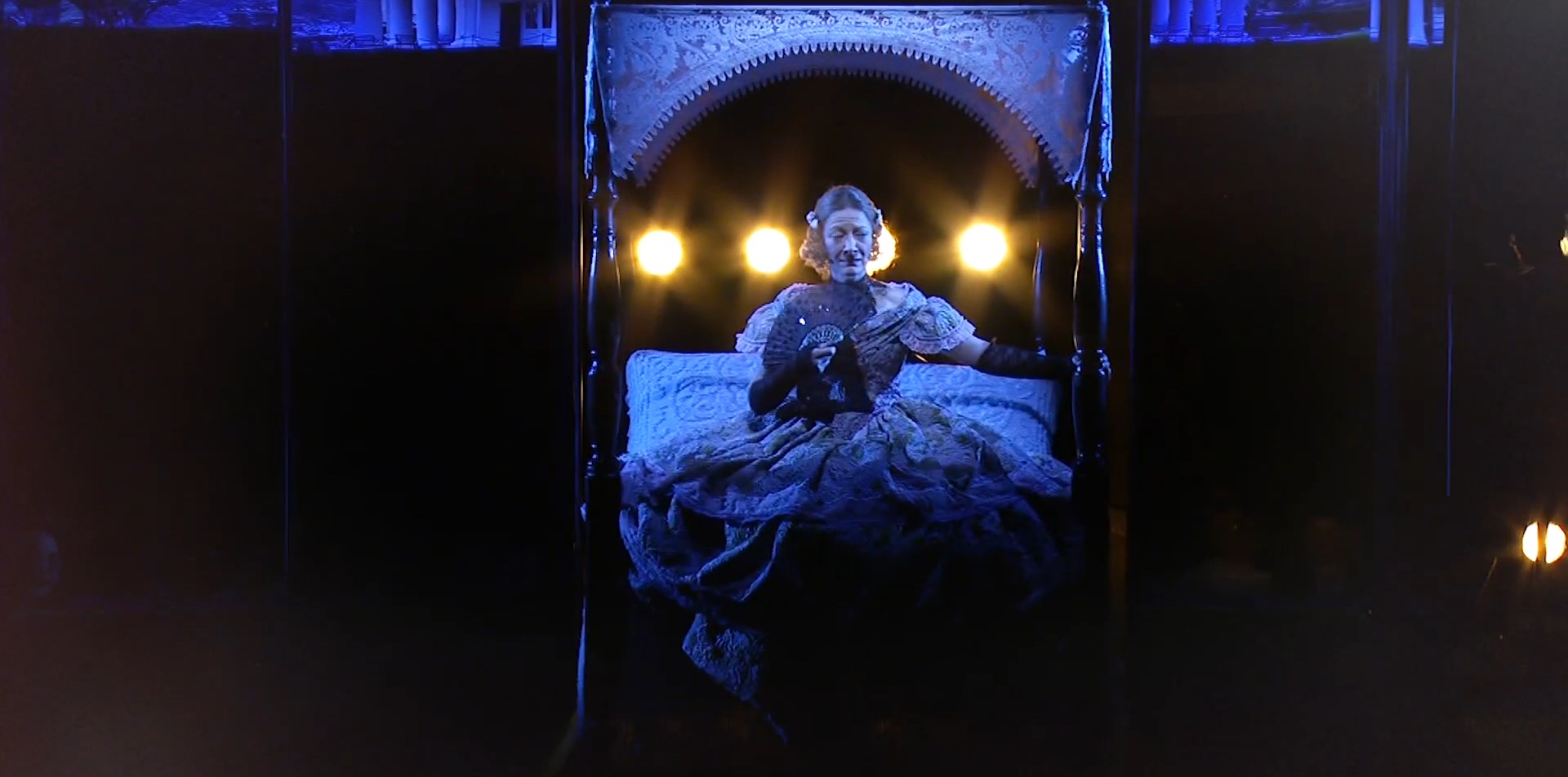HBO’s documentary film ‘Slave Play. Not a Movie. A Play.’ is an exploration of the creation of ‘Slave Play,’ Jeremy O. Harris’ highly acclaimed play that went on to be nominated for twelve Tony Awards. The drama revolves around three interracial couples who deal with their fading sexual lives, especially after the black partners’ loss of sexual attraction towards their white partners. To reignite the passion in their relationship, the couples undergo “Antebellum Sexual Performance Therapy,” only for them to dive into their race and sexual dynamics, which turn out to be interconnected. Even though the play’s eight main characters are fictional, their roots are undoubtedly in reality!
The Creation of Slave Play
‘Slave Play’ is a fictional drama written by Jeremy O. Harris without any particular real events as its foundation. The three couples and the Antebellum Sexual Performance Therapy they undergo do not exist in real life. The creation of the play can be traced back to a party the playwright attended. Jeremy listened to a straight white man talking about enacting a rape fantasy with his partner, making him feel that the latter was “owning” the actions. The playwright then asked the man whether he would “own” the same if his partner was black. “Everything got really tense for everyone. I was like, ‘Wait. Why is it tense now, but it wasn’t tense before?’” Jeremy told Vulture.

The incident made Jeremy dive into the long, interconnected history of black and white people, which prominently includes slavery. As someone who grew up in the American South, slavery was a part of the playwright’s community even after its abolition in the second half of the nineteenth century. When he realized that the entire country was not connected to its history, ‘Slave Play’ was born. “I grew up in the South in a real way. And when I came north, to Chicago specifically, I had a lot of friends that didn’t have this relationship to the history of slavery that I felt like I carried around with me,” he told Town & Country.
Through his play, Jeremy tried to show how close slavery is to life in the United States, even in the 21st century. A white character in the drama who asserts his power on his black partner to reclaim and cherish his sexual life is a harrowing reminder of how black women people were raped and forced to have sex with their white masters. The narrative of the play makes it clear that despite slavery’s abolition, it continues to exist through micro-aggressive behaviors.
Finding the Reality in Slave Play
‘Slave Play’ is rooted in reality because the aforementioned micro-aggressive behaviors exist in real life, irrespective of the fictional origin of the play’s characters. “So many Black people I’ve talked to told me that this work felt healing for them, to see their traumas — that they’ve not been able to articulate — articulated on stage,” Jeremy told Teen Vogue about his work’s connection with reality. “It’s felt healing to see people have to sit in recognition of the microaggressions that they enact every day. This moment of recognition has made them feel like someone stood on the front lines and articulated something that they wanted to and didn’t have the words for,” he added.

Rather than based on reality, Jeremy’s play is a work that tries to alter it. It is a reminder that the present generation carries traumas and toxic traits that can be traced back to the years of slavery, especially when power and subservience continue to be present in modern-day relationships. The fictional play proposes healing for a better reality. “I think we all have to do better about healing and moving forward and processing. This play starts people on their journey to do that,” clarified Joaquina Kalukango, who played Kaneisha during the play’s initial Broadway run in 2019, to Broadway.
Ultimately, Jeremy’s play is about the existence of a different kind of slavery without chains. As a black man dealing with worse health care and quality of life, he wanted to raise the question of how far his community has moved forward. The experiences of characters such as Kaneisha answer that the progression is not significant enough, just like millions of black individuals would say. That’s how the fiction in ‘Slave Play’ meets reality.
Read More: Slave Play: Who Plays Whom? Where Are the Actors Now?


You must be logged in to post a comment.